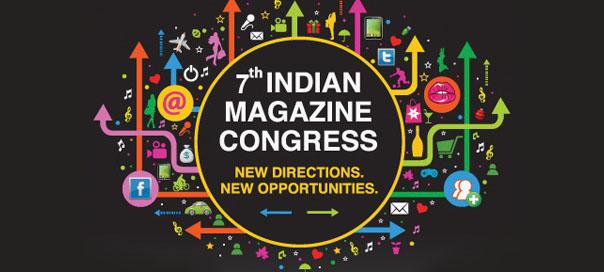The two-day Indian Magazine Congress (IMC), the annual conference organized by the Association of Indian Magazines (AIM), began in Mumbai on February 14
Addressing the gathering on the first day of the two-day Indian Magazine Congress (IMC), Tarun Rai, President, AIM and CEO, World Wide Media said it is time for magazines to explore new opportunities that technology and the digital platform provide as readers spend more time on the digital version of magazines than the print version. He also emphasized that studies have proved that RoI of advertising expenditures is highest in magazines. Rai added, “The need of the hour for the magazine industry is to adapt change. This calls for editorials to redesign content for different platforms, while marketing and sales professionals should also sell across platforms in a creative way and publishers should come out with robust business plans.”
The opening keynote address was delivered by Nitin Paranjpe, CEO and MD of Hindustan Unilever. Paranjpe stated that HUL has managed to stay at the top of the game, as it constantly views current media trends and changed with the times when required. He added that change should be viewed as an opportunity and embraced. Demonstrating an example, Paranjpe said that when HUL saw the emergence of modern retail outlets, the company adapted to newer methods to suit the channel of the future. Paranjpe also shared his fears of television commercials, i.e., 30-second ads becoming irrelevant in an age where people are moving from the idiot box and shifting to newer media such as the Internet and cautioned that it won’t be long before the death knell is sounded for 30-second ads. Another keynote speaker, Peter Kreisky, Chairman, Kreisky Media Consultancy, spoke on another form of change – new rules for magazine media and how magazines can move towards the new business model. He described ways in which traditional publishers can undergo strategic transformation to be ready for the digital age.
With information being available today on multiple platforms, more and more magazines are looking at being present across multi-platforms so that their readers can access them at various communication points. A publishing house that has done that successfully is France’s Psychologies Group as their magazine has customized versions that can be accessed and carried by its readers wherever they wish to take it including on the digital and social media space. According to Arnaud Saint-Simon, Chief Executive Officer, Psychologies Group, France, “Creating visibility on multiple platforms can only happen when a brand is clear about the values and business specifications.” He further said that brands shouldn’t be apprehensive when they step into multi-platforms. Learn from the mistakes is what he suggested.
International publications continued to be gung-go about the Indian magazine space, increasing the scope for collaborations. Fabrizio d’Angelo, Managing Director, Burda International GmbH and Hubert Burda Media Holding, believes, “The Indian publishing market is a very event-driven market. It is a country of rising middle class, which means consumption partners change with changing technology.
Therefore, it will give great scope for foreign publications to collaborate with local publishers and introduce some interesting elements.”
Not just international publications but also marketers are upbeat about Indian magazines. However, Lutz Kothe, Chief General Manager, Marketing and PR, Volkswagen India cautioned that the future for 2013 and beyond will be challenging if a 360-degree approach is not adopted. On the other hand, Josy Paul, Chief Creative Officer & Chairman, BBDO, India, said magazines can never die as “they are like babies” and stressed that a medium such as magazines has a USP that will not fade with time. Paul’s thoughts were echoed by Sonal Dabral, Chairman and Chief Creative Officer, DDB Mudra Group. Dabral cited the examples of The Economist, The Woodward, and FHM magazines to highlight how magazines across the globe come up with innovative and unique campaigns that have hit the reader’s desired (from the magazine’s perspective) nerve. Satyaki Ghosh, Director, Consumer Products, L’Oreal India affirmed that he would continue advertising in magazines owing to high impact they generate. However, at the same time he stressed that unless the objective does not achieve a certain benchmark, it will not be considered to be innovative.
“Digital publishing is no more a gamble for the future,” said Girish Ramdas, CEO and Co-Founder, Magzter, Consumers’ use of the Tablets, Mobiles and other digital devices. Ramdas pointed out that publishers are moving towards the digital front by not only re-monetising their business, but also repackaging the content separately adding, “Interactivity is the key driver here, and engagement on interactivity module is far more in the digital domain.” Michael Galin, EVP, Research, Gfk Mediamark Research and Intelligence, LLC said that media behavior has changed owing to tablet usage as with the advent of tablets, users have started multi-tasking, listening to the radio, and even used the tablet in the bathroom. Globally, these devices have led to the beginning of a new era.























